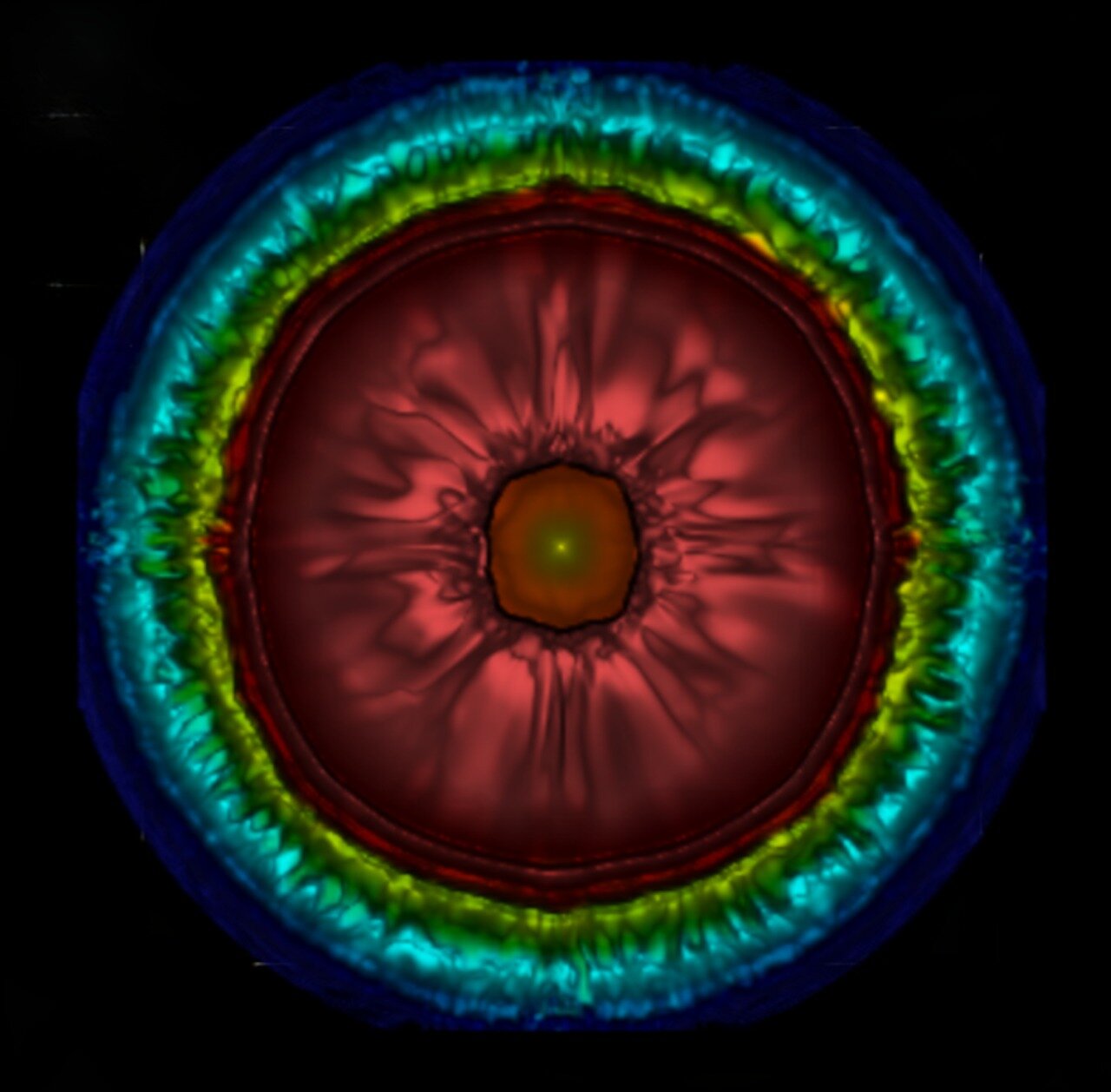
superluminous supernovae tagged posts


Swedish and Japanese researchers have, after ten years, found an explanation to the peculiar emission lines seen in one of the brightest supernovae ever observed – SN 2006gy. At the same time they found an explanation for how the supernova arose.
Superluminous supernovae are the most luminous explosions in cosmos. SN 2006gy is one of the most studied such events, but researchers have been uncertain about its origin. Astrophysicists at Stockholm University have, together with Japanese colleagues, now discovered large amounts of iron in the supernova through spectral lines that have never previously been seen either in supernovae or in other astrophysical objects...
Read More
UV light from Superluminous Supernova key to revealing Explosion mechanism
An international team has discovered a way to use UV light from superluminous supernovae to uncover its explosion mechanism, and used it to identify Gaia16apd as a shock-interacting supernova, reports a new study. An international team has discovered a way to use observations at UV wavelengths to uncover characteristics about superluminous supernovae previously impossible to determine.
The team, led by Kavli Institute for the Physics and Mathematics of the Universe (Kavli IPMU) Project Researcher Alexey Tolstov, study stellar explosions called Superluminous Supernovae (SLSNe), an extra bright type of supernova discovered in the last decade that is 10 to 100 times brighter than ordinary supernovae...
Read More
The yellow arrow marks the superluminous supernova DES15E2mlf in this false-color image of the surrounding field. North is up and east is left. This image was observed with the Dark Energy Camera (DECam) gri-band filters mounted on the Blanco 4-meter telescope on Dec. 28, 2015, around the time when the supernova reached its peak luminosity. Credit: Observers: D. Gerdes and S. Jouvel
At a distance of 10 billion light years, a supernova detected by the Dark Energy Survey team is one of the most distant ever discovered and confirmed. The death of a massive star in a distant galaxy 10 billion years ago created a rare superluminous supernova that astronomers say is one of the most distant ever discovered...
Read More





Recent Comments